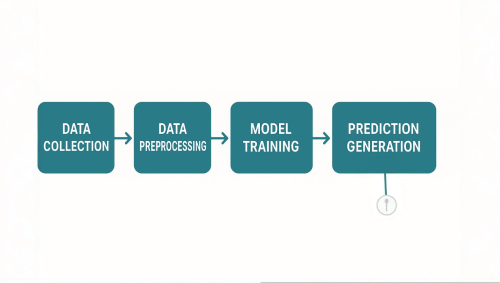In today’s hyper-competitive digital landscape, simply understanding what happened in your business yesterday isn’t enough. Companies thriving are those anticipating what happens next. Imagine knowing which customers are likely to leave before they do, which marketing message will resonate most deeply, or which market trend is about to take off. This isn’t science fiction; it’s the power of Predictive Analytics Agents. These sophisticated AI-driven tools are transforming how businesses operate, moving them from reactive decision-making to proactive, data-informed strategies. If you’re looking to gain a significant competitive edge, understanding and potentially implementing predictive analytics agents is no longer optional—it’s essential for sustainable growth.
This post delves deep into the world of predictive analytics agents, exploring how they function, the incredible insights they unlock regarding customer behavior and market trends, and how you can leverage them to propel your business forward.
What Exactly Are Predictive Analytics Agents? More Than Just Data Crunching
Let’s break down the term:
- Predictive Analytics: This is a branch of advanced analytics that uses historical data, statistical algorithms, and machine learning techniques to make predictions about future outcomes. It answers the question: “What is likely to happen?”
- Agents: In the context of AI, an “agent” is an autonomous entity that perceives its environment (through data) and acts upon that environment to achieve goals (like optimizing a campaign or flagging a churn risk).
So, Predictive Analytics AI Agents are essentially AI systems designed to autonomously:
- Collect and process vast amounts of relevant data.
- Identify patterns and correlations within that data.
- Build predictive models based on these patterns.
- Generate forecasts about future events, behaviors, or trends.
- Often, they can even trigger actions based on these predictions (e.g., sending a personalized offer).
How is this different from traditional Business Intelligence (BI)?
Traditional BI typically focuses on descriptive analytics (what happened) and diagnostic analytics (why it happened) using historical data dashboards and reports. Predictive analytics agents go a step further into predictive (what will happen) and often prescriptive analytics (what should we do about it?). They are forward-looking and often operate with greater autonomy.
The Engine Room: How Predictive Analytics AI Agents Work Their Magic

These agents aren’t powered by magic, but by a sophisticated blend of data science and technology. Here’s a simplified look under the hood:
- Data Collection: Agents ingest data from diverse sources:
- Historical Data: CRM records, past sales figures, website interactions, previous campaign results.
- Real-time Data: Current website traffic, social media mentions, IoT sensor data, stock market fluctuations, news feeds.
- Third-Party Data: Demographic information, industry reports, competitor pricing.
- Data Preprocessing: Raw data is messy. This stage involves cleaning the data (handling missing values, removing duplicates), transforming it into a usable format, and selecting relevant features that will influence the predictions.
- Model Building & Training: This is where Machine Learning (ML) comes in. Based on the goal (e.g., predicting churn, forecasting sales), specific algorithms are chosen and trained on the historical data. Common techniques include:
- Regression: Predicting continuous values (e.g., future sales revenue, customer lifetime value).
- Classification: Categorising outcomes (e.g., will a customer churn: yes/no; is a lead qualified: yes/no).
- Clustering: Grouping similar data points (e.g., identifying distinct customer segments).
- Time Series Analysis: Forecasting future values based on time-ordered data (e.g., predicting product demand over the next quarter).
- Prediction Generation: Once trained, the model is fed new, real-time data, and the predictive analytics agent generates forecasts or identifies likelihoods.
- Action & Iteration: The outputs can be presented as insights on a dashboard, trigger automated actions (like sending a targeted email via a marketing automation platform), or alert human decision-makers. The models are continuously monitored and retrained with new data to maintain accuracy.
Crystal Ball for Customers: Forecasting Behaviour with Precision
Understanding your customers is paramount. Predictive analytics agents offer unprecedented granularity in anticipating their actions:
- Predicting Purchase Intent: By analysing Browse history, cart additions, time spent on product pages, and past purchase behaviour, agents can score leads or existing customers on their likelihood to make a purchase soon. This allows sales teams to prioritize efforts and marketing to deliver timely offers.
- Identifying Churn Risk: Customer churn is costly. Predictive agents analyze factors like declining engagement, support ticket frequency, payment issues, and competitor interactions to flag customers at high risk of leaving. This enables proactive retention efforts (e.g., special offers, outreach calls) before it’s too late.
- Studies suggest that acquiring a new customer can be anywhere from 5 to 25 times more expensive than retaining an existing one, highlighting the immense value of churn prediction.
- Calculating Customer Lifetime Value (CLV): Agents can forecast the total revenue a business can reasonably expect from a single customer account throughout the business relationship. This helps businesses identify their most valuable customer segments and tailor investments accordingly.
- Enabling Hyper-Personalization: Forget generic email blasts. By understanding individual preferences, purchase history, and predicted interests, agents allow businesses to deliver highly personalized content, product recommendations, and offers across multiple channels, significantly boosting engagement and conversion rates. Imagine an e-commerce site dynamically changing its homepage based on the predicted interests of the visitor landing there.
Reading the Market: Predicting Trends and Demand
Beyond individual customers, predictive analytics agents excel at understanding the broader market landscape:
- Identifying Emerging Trends: By analyzing vast datasets from social media conversations, news articles, search engine queries, and industry publications, agents can spot nascent trends, shifts in consumer sentiment, or upcoming technological disruptions long before they become mainstream.
- Accurate Demand Forecasting: Businesses constantly struggle with inventory management – holding too much ties up capital, while too little leads to lost sales. Predictive agents analyze historical sales data, seasonality, promotional impacts, economic indicators, and even weather forecasts to predict product demand with much greater accuracy.
- Accurate demand forecasting enabled by AI and predictive analytics can lead to significant improvements in supply chain efficiency, potentially reducing forecasting errors by up to 50% and lost sales due to stockouts by up to 65%.
- Competitive Intelligence: Agents can monitor competitors’ pricing changes, marketing campaigns, product launches, and online mentions to help businesses anticipate competitive moves and adjust their own strategies proactively.
- Optimizing Pricing Strategies: Predictive models can analyze how price changes impact demand, considering factors like competitor pricing, customer perceived value, and inventory levels, helping businesses set optimal prices to maximize revenue or market share.
The Real-World Impact: Tangible Benefits of Predictive Analytics Agents

Implementing these AI-powered tools isn’t just about sophisticated tech; it’s about driving measurable business results:
- Improved Marketing ROI: Target the right audience with the right message at the right time, reducing wasted ad spend and increasing campaign effectiveness.
- Enhanced Customer Experience (CX): Proactively address customer needs, personalize interactions, and reduce friction points, leading to higher satisfaction and loyalty.
- Optimized Operations: Improve inventory management, staff scheduling, resource allocation, and supply chain logistics based on accurate forecasts.
- Reduced Risk: Proactively identify potential fraud, credit risks, and customer churn, allowing for timely intervention.
- Increased Revenue and Growth: Drive sales through better targeting, personalization, and optimized pricing, while reducing costs through efficiency gains.
- According to various market research reports, the global predictive analytics market is experiencing substantial growth, projected to reach hundreds of billions of dollars within the next few years (e.g., a report by MarketsandMarkets projected growth to USD 28.1 billion by 2026 – note: check for the latest reports as market sizes evolve rapidly), indicating widespread adoption and recognized value.
Use Cases Across Industries:
- Retail & E-commerce: Demand forecasting, personalized recommendations, churn prediction, price optimization.
- Finance & Banking: Fraud detection, credit risk scoring, customer lifetime value prediction, algorithmic trading.
- Healthcare: Patient risk stratification, predicting disease outbreaks, optimizing hospital staffing, personalized treatment plans.
- Manufacturing: Predictive maintenance (predicting equipment failure), supply chain optimization, quality control.
- Marketing & Advertising: Campaign optimization, audience segmentation, lead scoring, sentiment analysis.
Navigating the Hurdles: Challenges and Considerations
While powerful, implementing predictive analytics agents isn’t without challenges:
- Data Quality & Availability: Garbage in, garbage out. Poor data leads to inaccurate predictions.
- Model Accuracy & Bias: Models are only as good as the data they’re trained on. Biased data can lead to unfair or discriminatory outcomes. Continuous monitoring and validation are crucial.
- Ethical Implications: Concerns around data privacy, transparency (explaining why a prediction was made), and potential misuse of predictive insights need careful consideration and ethical guidelines.
- Need for Skilled Personnel: While platforms are becoming more user-friendly, expertise in data science, AI, and the specific business domain is often required for effective implementation and interpretation.
- Integration Complexity: Integrating predictive tools with existing systems (CRM, ERP, marketing platforms) can be technically challenging.
Conclusion: Don’t Guess When You Can Predict
The era of reactive business strategy is fading. Predictive Analytics Agents offer a powerful lens into the future, enabling organizations to anticipate customer needs, foresee market shifts, and optimize operations with unprecedented accuracy. By harnessing the power of AI and machine learning on historical and real-time data, businesses can move beyond intuition and guesswork, making data-driven decisions that foster deeper customer relationships, create significant competitive advantages, and ultimately drive sustainable growth.
Frequently Asked Questions (FAQs)
Q1: What’s the main difference between predictive analytics and descriptive analytics?
Descriptive Analytics focuses on summarizing historical data to understand what happened (e.g., monthly sales reports, website traffic summaries). Predictive Analytics uses historical and current data to forecast what is likely to happen in the future (e.g., predicting next month’s sales, identifying customers likely to churn).
Q2: Do I need a dedicated data scientist to use predictive analytics agents?
Not necessarily. While complex custom model building requires data scientists, many modern platforms offer user-friendly interfaces and pre-built models for common business problems (like lead scoring or churn prediction) that business analysts or savvy marketers can utilize. However, having someone who understands data interpretation is crucial.
Q3: How accurate are the predictions made by these agents?
Accuracy varies depending on the quality and quantity of data, the complexity of the problem, and the sophistication of the algorithms used. Good models achieve high levels of accuracy, but they are probabilistic, not deterministic (they predict likelihoods, not certainties). Continuous monitoring and retraining are essential to maintain accuracy.
Q4: What are some popular tools or platforms for predictive analytics?
Many platforms exist, ranging from components within large cloud providers (AWS SageMaker, Google AI Platform, Azure Machine Learning) to features integrated into CRM/Marketing suites (Salesforce Einstein, HubSpot’s predictive features) and specialized analytics tools (like DataRobot, Alteryx, H2O.ai). The best choice depends on your specific needs, budget, and technical expertise.
Q5: Are there ethical concerns with using predictive analytics on customer data?
Yes. Key concerns include data privacy (using sensitive data responsibly and securely), potential bias in algorithms (leading to unfair treatment of certain groups), and transparency (being able to explain how predictions are made). Businesses must implement strong ethical guidelines, ensure compliance with regulations (like GDPR or CCPA), and prioritize fairness and transparency.

